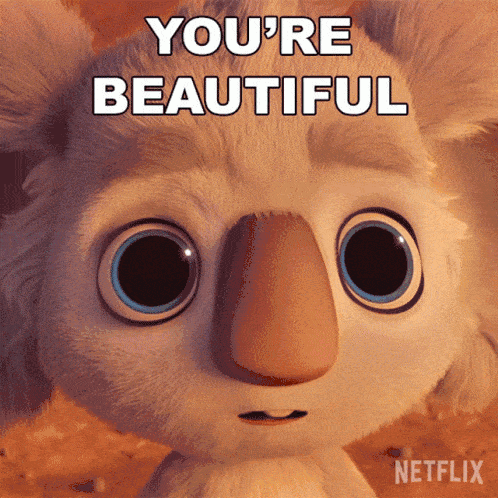What do you think when you look in the mirror?
Advertisement - Scroll to continue
How tall are you?
How does your skin look like?
Do you wear make-up?
What is your body shape?
What is the color of your eyes?
Advertisement - Scroll to continue
How big are your eyes?
Do you have big lips?
Are you confident about your appearance?
Do you have naturally long eyelashes?
Do you take selfies?
Advertisement - Scroll to continue
Are you a fit and healthy person?
How would you describe your personality?
How long is your hair?
What is your skin color?
What kind of clothes do you wear?
Advertisement - Scroll to continue
Do you have any piercings?
How do you usually feel?
What face shape do you have?
What is your hair color?




Have you ever wondered: “am I pretty”? You can’t judge it yourself, or your judgment is not objective? Are your friends also unable to answer your question? If the answer to these three questions is “yes”, you’ve come to the right place. Today’s quiz will help you answer that. Read the text to find out what the golden ratio is, how beauty is perceived among different people, and what makes people pretty. I invite you to read the text and take the quiz.
Physical attractiveness is the extent to which a person’s physical characteristics are considered aesthetic or beautiful. Many factors make one person attractive to another, and physical aspects are one of them. The physical attraction includes universal perceptions common to all human cultures, such as facial symmetry, socio-cultural conditions, and personal preferences unique to an individual.
With the symmetry of the face, it is worth mentioning the golden ratio here. During the European Renaissance, renowned artists and architects used an equation known as the “golden ratio” to map out their masterpieces. Thousands of years later, scientists adopted this mathematical formula to help explain why some people are considered pretty.
To check the golden ratio on yourself, you need to measure the length and width of the face and divide the length by the width. The ideal result is roughly 1.6. As for the next step, you need to measure three segments of the face — from the forehead hairline to a spot between the eyes, from between the eyes to the bottom of the nose, and from the bottom of the nose to the bottom of the chin. If the numbers are equal, a person is considered prettier. Finally, measure other facial features to determine symmetry and proportion. On a perfect face, it is said that the length of an ear is equal to the length of the nose, and the width of an eye is equal to the distance between the eyes.
Appearance is one of the most important factors in how you behave towards another person. It also influences the attribution of certain personality traits to people and the way of predicting their behavior in the future. The mental image of the characteristics of a pretty and ugly person makes us unknowingly modify our behavior to confirm this image. This becomes one of the reasons for the fulfillment of these expectations. Physical attractiveness is a strong determinant of liking, along with similarity, honesty, frequency of contact, and more. It plays an important role, especially in the initial stages of relationships. This applies to love, but also to friendship.
Some people are convinced that when assessing a person’s beauty, they refer to individual preferences and ideas. Therefore, it makes no sense to describe appearance traits that are permanently related to physical attractiveness.
It turns out that in most cases people accurately judge whether a person is considered attractive among others or not. This means that people know the “beauty standard” that is valid and common in a given culture at any given time. A meta-analysis of studies conducted over 67 years also showed high intercultural compatibility in this matter. In addition, individual preferences in terms of physical attractiveness are very similar and share many characteristics. The patterns of female and male beauty are common in a given community – the vast majority of its members agree on what is considered attractive.
The pattern of female beauty is highly culturally variable. It also changes with fashion and time. In many cultures, the body is deliberately deformed in such a way as to match the current beauty standards. It includes sunbathing, piercing, corsets, tattoos, liposuction, plastic surgery, injection of substances that hide wrinkles, etc. The Chinese restrained girls’ feet in a special way, the Maya deformed their skulls and caused squint, Australian Aborigines broke their noses, numerous African tribes deform the body, making it “more beautiful”. In poor societies, where most people are thin or thin, curly shapes are seen as attractive. In satiated cultures, slim figures are seen as attractive.
Scent stimuli influence the perception of attractiveness. Almost always, strong body odors released by people who are sweaty or who rarely wash are considered unattractive. However, the smell of the human body to the point where it has not reached a level that is perceived as unpleasant is often considered a factor of physical attractiveness.
One experiment revealed that the perception of another person’s physical attractiveness partly depends on how we feel about them. When observers dislike the person depicted in the film, they judge them as less attractive. It turned out that discovering the similarity between the person you talk to and yourself, can increase their attractiveness in your eyes. Research also shows that “love is blind” – people who are very much in love with their partners tend to find others as less pretty than the loved one.
How do you perceive prettiness? Do you have your own definition for this? What do you think about your appearance? If you want to see what we think about you, answer twenty questions in this quiz. Thanks to this, we will be able to show you your result immediately.
